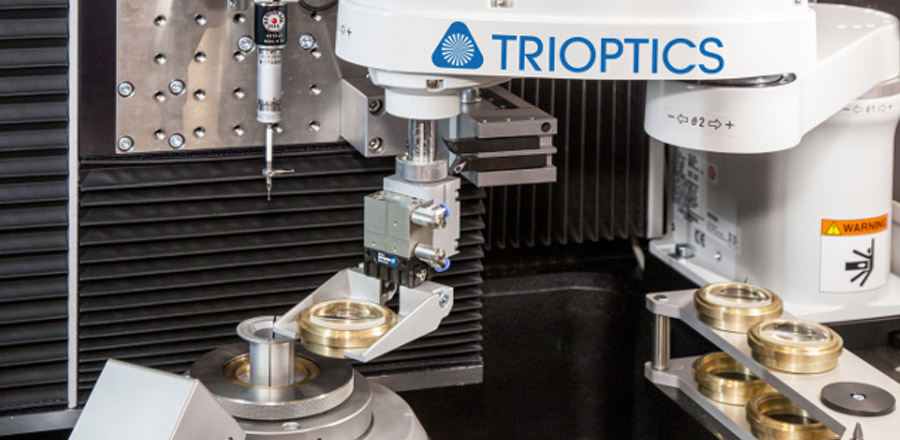Increased efficiency through automated centering of lens systems.
At Optatec in Frankfurt, TRIOPTICS presented robot-based automation solutions for loading the OptiCentric® 100 centring tester and the ATS 100 adjusting lathe for series production for the first time in Europe.

To increase production efficiency in optical manufacturing, TRIOPTICS has been offering automated systems for years. This applies in particular to all solutions that serve the centering of lens systems and their testing. Dr. Patrik Langehanenberg, product manager for OptiCentric® centering testers, explains: “There are several reasons why we focus on automation. One of them is to increase the process reliability of our systems. Unfortunately, operators are the limiting factor for accuracy and process duration in many processes. This is where robot-assisted processes enable improvements.” Many processes of the OptiCentric® systems and the ATS adjusting lathe have been automated for years.
Now TRIOPTICS goes one step further. “In series production, the operator previously used the optics manually and then started the process,” reports Dr. Christian Buß, Product Manager for ATS. “This is where robots are now used that take over exactly the step of loading and unloading. This means that complete lens series can be processed in a single operation, while the user performs additional tasks or loads other systems with the lens trays.
The fact that the engineers from TRIOPTICS have actually captured the pulse of time with this development was demonstrated by the lively customer interest at Optatec in Frankfurt, where both solutions were presented as a highlight. The direct integration of the robots into the respective process was particularly enthusiastically received. This ensures stable functionality. The range of possibilities – integration into different systems, for different applications and varying lens diameters – also impressed many visitors. Dr. Buß sums up the development: “We thus offer a further, frequently requested option that realizes the goal of increasing capacity utilization and throughput in the production of the most diverse lens systems”.

The ATS 100 is loaded by the robot with a mounted lens. Immediately afterwards, the alignment and turning process begins.
More knowledge for experts
This article inspired you?
Are you looking for further knowledge transfer?


